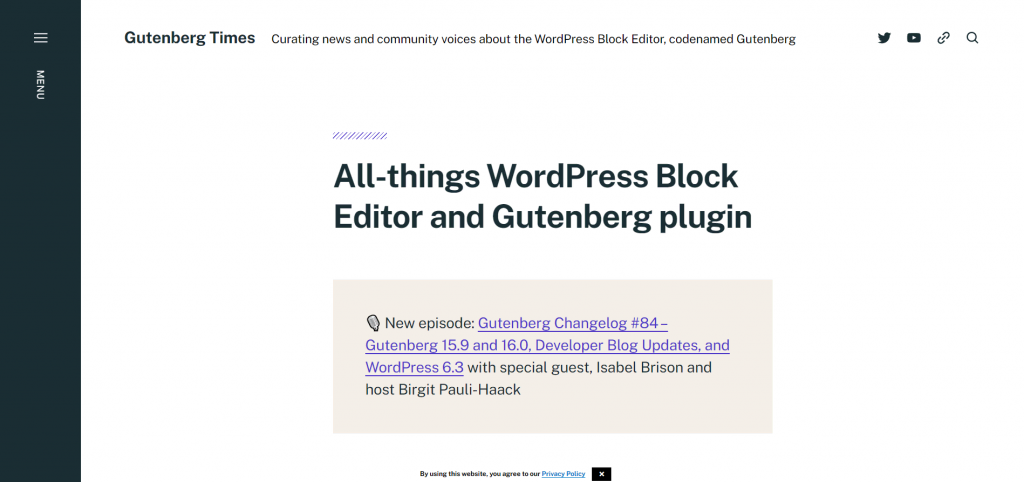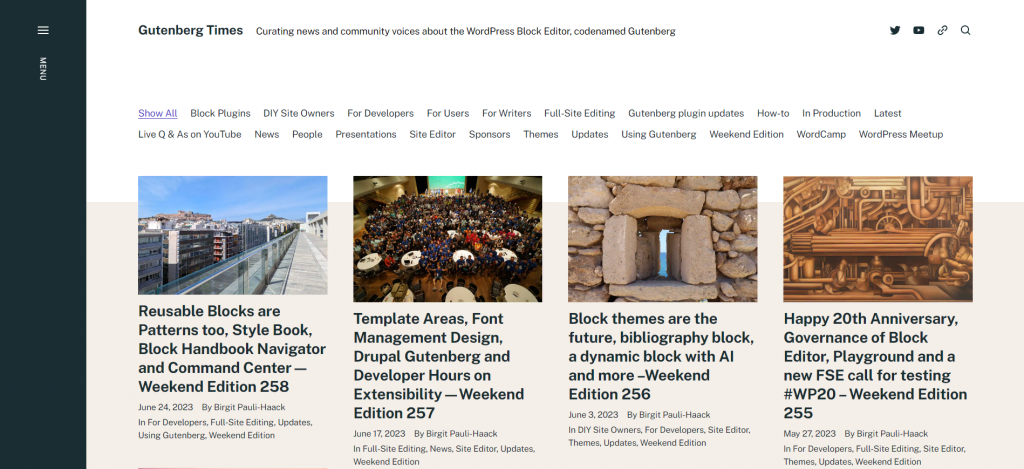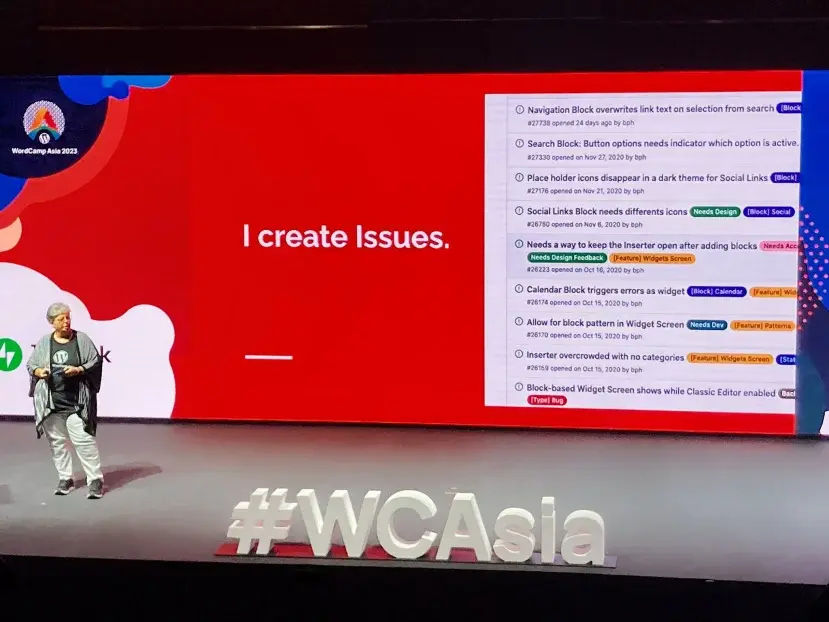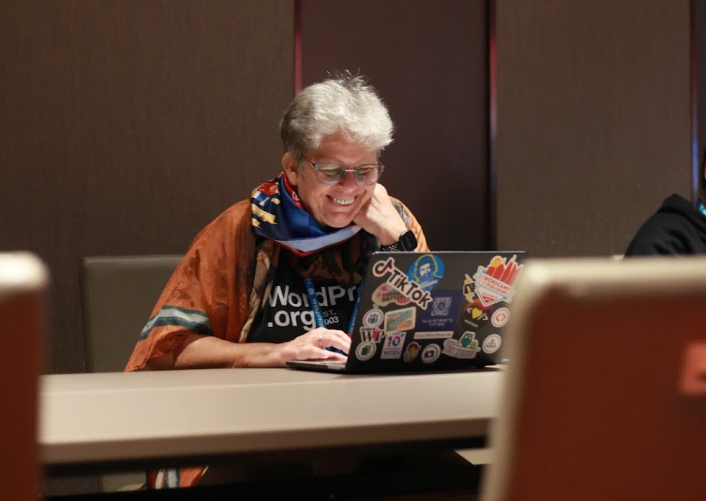Ask anyone in the WordPress community where is the best place to learn about block editors, and they’ll probably suggest: Gutenberg Times. This site features lots of news and opinions about the Gutenberg block editor from the WordPress community.
The mastermind behind this platform is Birgit Pauli-Hark, WordPress Core Contributor. She personally curates the site’s content with inclusivity and diversity of perspectives in mind. In doing so, she hopes, everyone can benefit from it, regardless of background or knowledge level.
We are lucky enough to write about Birgit and her projects in our first edition of the WordPress Expert article series. Today we cover the origins of Gutenberg Times, how she runs it, and the importance of knowledge sharing in open source projects.
dawn of time
Birgit was fascinated by Gutenberg the moment it was introduced at WordCamp Europe 2017 just six years ago.
She felt like she had seen a diamond in the rough. “We believed that this would make content creation much easier and richer. WYSIWYG, really. We knew content creators would love it if this was integrated into the core software,” she says.
But the main reason Birgit was so interested in Gutenberg was the ability for users to create or modify templates directly from their WordPress site without any code. This means you no longer need programming skills to adjust your site. Birgit simplifies content management for digital agency clients.
“When working with clients, we were often asked to change the look of posts on different pages. For example, adding categories or removing authors. So it was fast, but it was hard for the site owner, and changes were made very easy via the block editor,” explains Birgit.
On top of that, Gutenberg can lock certain design features like color schemes and typography. This way you don’t accidentally ruin the overall design that the design team has carefully crafted.
Birgit also found that the agency’s developers could use block themes for prototyping the overall design and information flow with the client. This is also great for designers who are not developers. On the other hand, experienced developers accustomed to developing with the classic theme can easily adapt to the block theme as it follows the same template hierarchy as the classic theme.
But like many people new to WordPress, Birgit needed help understanding this new technology. So she wanted to know all about Gutenberg and what others were doing with it, so in June 2017 she began curating tweets and blog posts about Gutenberg. She collected them on her social networking site and aimed to make them available to all WordPress enthusiasts.
After all, open source projects can only move forward when there is a wealth of publicly available information.
Six months later, Birgit decided to create a website for the Gutenberg Times in order to have a dedicated space to store the information he collected. Having a website allows you to organize your content the way you want.
On top of that, Birgit started getting more organic traffic. People can find her site when searching for Gutenberg-specific information on her search engine.
Also, people kept asking her if she had a newsletter so she could step up her publishing efforts even more.

This wasn’t the end of her journey – now Birgit is also hosting the bi-weekly event Gutenberg changelog podcastLet’s discuss the latest Gutenberg release with WordPress enthusiasts and experts.
“We aim to not only talk about what is in the release log, but to dig a little deeper into it. , because Gutenberg is a beta version of what’s coming with the next release,” explains Birgit.
Recently, Leonardus Nugraha, Resident WordPress Content Strategist at Hostinger, said: The 81st podcast on WordPress 6.2.
Birgit also hosts live Q&As from time to time. Its format is a panel discussion where people can register and ask questions.
Mission: Gutenberg 101
From the early days of Gutenberg, prominent discussion About the Classic Editor and Gutenberg. This is one of the biggest changes to WordPress in his decade. Gutenberg is constantly improving, and not everyone is eager to learn new interfaces.
Birgit then realized that the resources she found online about Gutenberg were more likely to talk about the controversy than about what people could actually do with it. At that time, she decided to focus her knowledge-gathering efforts solely on Gutenberg. Doing so allowed her and her readers to learn how to use her Gutenberg to solve problems.
Birgit aims to make the Gutenberg Times content as comprehensive as possible so that readers of any skill level can learn what they need to know. As such, each Gutenberg Times piece of content in her category has its own target audience.

These categories include:
- DIY site owner – Exclusively for non-developer site owners, including tutorials and other content for the latest Gutenberg iterations
- For developers – Contains detailed documentation on topics such as how to use Gutenberg scripts.
- weekend edition – This section has something for everyone – This is where Birgit compiles news, commentary, tutorials, plugins or themes related to block editors and Gutenberg plugins every Saturday.
As for the Gutenberg Changelog podcast, it caters to people who want to stay up to date on all Gutenberg releases.
Maintaining a website with multiple types of content for different audiences can be a daunting task. Still, Birgit sees this as an essential task, especially for an open source project like WordPress.
Open source projects only thrive when, in addition to visionaries and geniuses, someone teaches others how to use and build technology.
“The exchange of ideas, problems, and solutions is essential for open source communities because it accelerates growth and software quality,” she says. “Some things I never knew I had to try. When I finally figured out how to do it, I want others to know how to do it. It helps me get better.”

In addition, Birgit finds it helpful to explain technical problems and their solutions to others.
“My website is a public place, but it’s also a place I can come back to. For example, ‘How can I get the JSON file into Excel?’ You can do it and save a lot of time. ”
Behind the scenes of the Gutenberg Times
So far, the Gutenberg Times is run solely by Birgit himself. Since her 2021 she has been a full-time WordPress contributor sponsored by Automattic and running Gutenberg Times is now part of her day job.
“At first, I never dreamed that after five years at the Gutenberg Times, I would be able to continue publishing as part of my full-time work on an open source project.” Thank you to all our supporters who have tipped and most importantly shared their ideas and suggestions.

Asked about the struggles of running the website alone, Birgit admitted it’s hard to find quiet time to put everything together. “It’s all so fascinating! Sometimes there’s just too much to do.”
But Birgit doesn’t see it as a struggle after all.
“If every WordPress outlet and every talk at a WordCamp was all about the block editor, I think we would probably have an uphill battle,” she muses.
Birgit remembered when a friend asked if Gutenberg Times would be deprecated once Gutenberg was integrated with the core WordPress software. She believes that as the Gutenberg Times evolves, it will retain its value.
Well, WordPress is 20 years old and Gutenberg is still 5 years in development. It seems that it is far from obsolete.
So how does Birgit handle all the tasks of efficiently creating different types of content? Gutenberg releases a new version every two weeks, so it’s time to review the website. It should be a lot of work to update it.
“I try to check every other day what has been merged into Gutenberg’s GitHub repository,” explains Birgit.
She also continues the habit of making quick notes when ideas for future publications come to mind. For example, she always creates a weekly weekend article from the previous week to collect ideas on a daily basis.
“When I have a new idea in my head, I write it down and decide whether to put it in a podcast or write it as an article.”
Birgit points out that making it a daily habit makes it feel like a small task. Then schedule when to work on that particular set of ideas. “The weekend edition comes out every Saturday, so I’ll check my notes on Friday afternoon to see what I’ve flagged for this week’s edition before I put it together.”
Birgit has also worked on other Gutenberg-related documents, so categorizing her ideas this way is especially helpful.For example, she New features for developers monthly roundup of WordPress Developer Blogand edit Get the latest information on the Gutenberg index Listed weekly in the Core Handbook.
She also poured content from the official documentation into the Weekend Edition of the Gutenberg Times and the Gutenberg Changelog podcast. This way, the same information can be adapted to different channels, killing two birds with one stone.
Are blocks the future?
Since the first release in 2018, The Gutenberg project went through several stages. Phase 1 gave birth to Block Editor, and Phase 2 was all about integrating site-wide editing into WordPress. In 2023, Phase 3 will begin, focused on collaborative editing.
At first, Gutenberg may seem like “just” an option available to give WordPress users more creative freedom. But as time goes on, it becomes clear that block editors, blocks and new interfaces will sooner or later take over the current WordPress in many ways.
“It could be a few more years before everything happens. It will change gradually, but it will definitely happen. And for many years, the Classic Editor will not go away,” Birgit said. increase. “When you’re in the web building business, change is the only constant in life.”
Birgit also stresses that WordPress isn’t just removing the classic theme. WordPress features are always backward compatible, and block themes actually follow the same template hierarchy as classic themes.
However, she suggests that developers need to adapt and get used to creating this Gutenberg-powered website to push the boundaries of what’s possible.
The Block Editor also opens vast possibilities for creating block themes using plugins to anyone with creative flair, even without a technical background. “Run it directly in the editor and export it, and you have a theme.
And for Gutenberg enthusiasts who want to share their knowledge with the community but haven’t yet decided where to share it, there are a few options. One of Birgit’s suggestions is for her to contribute to the open source project by submitting her bug report. Gutenberg’s GitHub repository.
This is an important task because users may experience features differently than developers.
“There are different ways to handle certain functions, and you have to understand all the different ways people use things,” Birgit says. In this way, community members can learn from each other and improve both their skills and WordPress development.

